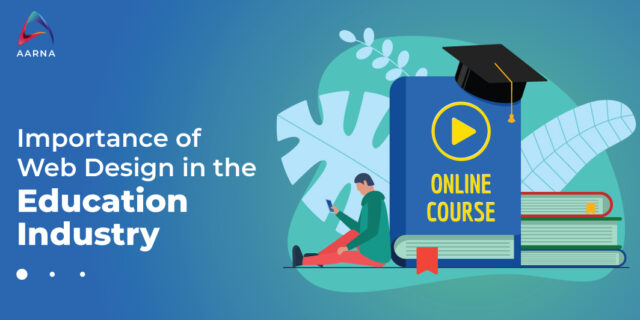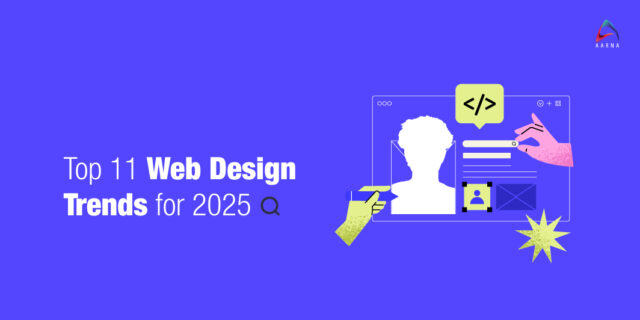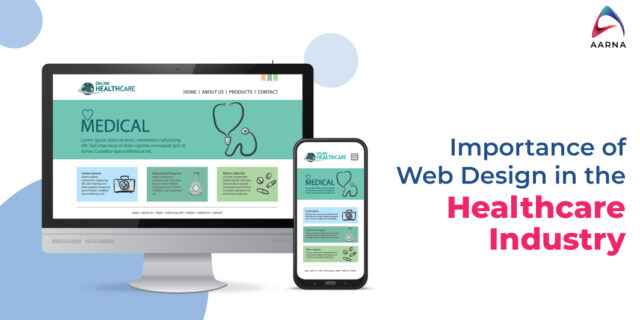We’re living in a mobile-first era, where people crave information on the go. Quick access to relevant content is essential in today’s fast-paced world.
Imagine this: You’re a busy parent, juggling work, family, and countless other responsibilities. You’re looking for a new school for your child, one that aligns with your family’s values and offers a quality education. You turn to your mobile, eager to research your options.
A well-designed school website appears as the first option, providing you with all the information you need, from academic programs to extracurricular activities, right at your fingertips. You can learn about the school’s philosophy, submit your query for admission, and even take virtual tours of the campus. Indeed, a good and user-friendly education institution’s website can be a game-changer
At Aarna Systems, the best web design company for education industry in Pune, we believe that compelling website design not only enhances the institution’s brand image but also plays a crucial role in attracting and retaining students, fostering engagement, and streamlining communication. A visually appealing and user-friendly website can be the deciding factor that sets an institution apart from its competitors. As such, educational institutions must prioritize website design as a strategic investment to remain relevant and competitive in the digital realm.
Key Features of a Good Education Website
A well-designed education website should possess several key features to effectively serve its target audience. These include:
1. Responsive Design
With the proliferation of mobile devices, an education website must be responsive and adaptable to different screen sizes, ensuring a seamless user experience across various platforms.
2. Clean and Modern Layout
A clean and visually appealing layout that adheres to modern design principles creates a positive first impression and enhances the overall user experience.
3. Easy Navigation
Intuitive navigation is essential for users to quickly find the information they need, whether it’s admission requirements, course details, or campus resources.
4. Multimedia Integration
Incorporating multimedia elements, such as videos, images, and interactive content, can effectively showcase the institution’s facilities, campus life, and educational programs, making the website more engaging and immersive.
Building Trust and Credibility
A well-designed website plays a crucial role in building trust and credibility with prospective students, parents, and the community. A professional and visually appealing website conveys a sense of legitimacy and reliability, instilling confidence in the institution’s offerings and capabilities.
By providing clear and concise information about the institution’s history, accreditations, faculty credentials, and academic achievements, a website can establish the institution as a reputable and trustworthy source of education. Furthermore, incorporating customer testimonials, industry partnerships, and accolades can further reinforce the institution’s credibility and reputation.
Enhancing Student and Parent Engagement
An effective education website should prioritize student and parent engagement by providing a range of interactive features and resources. By incorporating interactive features and resources, educational institutions can create a dynamic and engaging online learning environment. By prioritizing engagement, educational institutions can strengthen the connection between students, parents, and teachers, ultimately enhancing the overall learning experience.
These may include:
1. Online Portals
Dedicated online portals for students and parents simplify communication, providing access to academic resources, progress tracking, and announcements. These portals enhance transparency and collaboration, fostering a supportive learning environment. With 24/7 accessibility, they empower users to stay informed and connected, ensuring a seamless educational journey for everyone involved.
2. Online Applications and Admissions
Simplify admissions with online applications! A streamlined platform for forms and document submission enhances the experience for prospective students and families. It reduces paperwork, speeds up the process, and ensures efficiency. With user-friendly interfaces, applicants can easily navigate requirements, paving the way for a stress-free admission journey.
3. Virtual Tours
Immerse in the institution’s world through virtual tours! Explore campus life, facilities, and classrooms from anywhere. These tours offer a lifelike glimpse into the environment, creating excitement and connection for prospective students. By showcasing the institution’s strengths, virtual tours bridge the gap between physical and digital, making decision-making easier.
4. Social Media Integration
Integrating social media platforms into the website can foster a vibrant online community, enabling students, parents, and alumni to connect, share experiences, and engage with the institution. Share updates, celebrate achievements, and encourage engagement through vibrant digital networks. This integration enhances communication and strengthens bonds, turning the institution into a dynamic online hub.
Improving Information Accessibility
A well-designed education website should prioritize information accessibility, ensuring that users can easily find the information they need without frustration. By prioritizing accessibility, educational institutions can create inclusive learning environments that cater to the diverse needs of their users. This can be achieved through:
1. Clear and Organized Content Structure
A well-structured website with clear headings and subheadings ensures users find information effortlessly. Logical organization improves usability, guiding visitors smoothly through the content. By reducing confusion and enhancing navigation, this structure helps users quickly locate relevant details, boosting engagement and satisfaction with the website experience.
2. Powerful Search Functionality
A robust search feature transforms website navigation. It allows users to locate specific information, programs, or resources swiftly. By simplifying searches with advanced filters and suggestions, this functionality saves time and enhances the overall user experience, making the website a powerful and user-friendly tool for visitors.
3. Multilingual Support
Multilingual support bridges language gaps, making websites accessible to diverse audiences. For institutions with international students or multilingual communities, this feature ensures inclusivity and clear communication. Offering content in multiple languages broadens reach, enriches user experience, and demonstrates a commitment to serving a global audience effectively.
Impact on Enrollment Rates
A well-designed and user-friendly education website can have a direct impact on an institution’s enrollment rates. Prospective students and their families often rely heavily on online research when evaluating potential schools or universities. A visually appealing and informative website can effectively showcase the institution’s strengths, programs, and unique offerings, influencing the decision-making process.
Moreover, a website that prioritizes accessibility, engagement, and trust-building can significantly enhance the overall application experience, reducing barriers and encouraging more potential students to apply. By providing a positive and seamless online experience, institutions can increase the likelihood of attracting and retaining high-quality applicants.
SEO and Website Design
Search Engine Optimization (SEO) is a critical aspect of website design in the education industry. A well-optimized website can improve its visibility in search engine results, making it easier for prospective students and their families to discover the institution during their online research.
Factors such as page load speed, mobile-friendliness, structured data markup, and keyword optimization play a crucial role in SEO. By incorporating SEO best practices into the website design process, educational institutions can increase their online discoverability and reach a wider audience of potential students.
Get the Best Web Design for Your Education Institution
The importance of website design in the education industry is high, serving as a powerful marketing tool, engagement platform, and source of information. By prioritizing website design, institutions can enhance their brand image, build trust and credibility, foster engagement with students and parents, improve information accessibility, and ultimately impact enrollment rates.
A visually appealing, user-friendly, and optimized website not only elevates the institution’s online presence but also reflects its commitment to providing an exceptional educational experience. As the education industry continues to evolve, embracing the significance of website design will be paramount for institutions seeking to remain competitive and attractive to prospective students and their families.
Are you an educational institution in Pune, India, eager to attract more students and enhance your online reputation? Look no further than Aarna Systems. As the leading web design company for the education industry in Pune, we specialize in creating visually stunning and user-friendly websites that leave a lasting impression.
Partner with us to:
- Attract More Students: Our expert designers will craft a website that captures the essence of your institution and resonates with potential students.
- Enhance Your Brand Image: A well-designed website can significantly elevate your brand’s credibility and professionalism.
- Improve Student Engagement: Our websites are designed to be highly interactive and engaging, keeping students interested and informed.
Don’t miss out on the opportunity to take your educational institution to new heights. Contact Aarna Systems today and let’s build a website that will set you apart from the competition.


